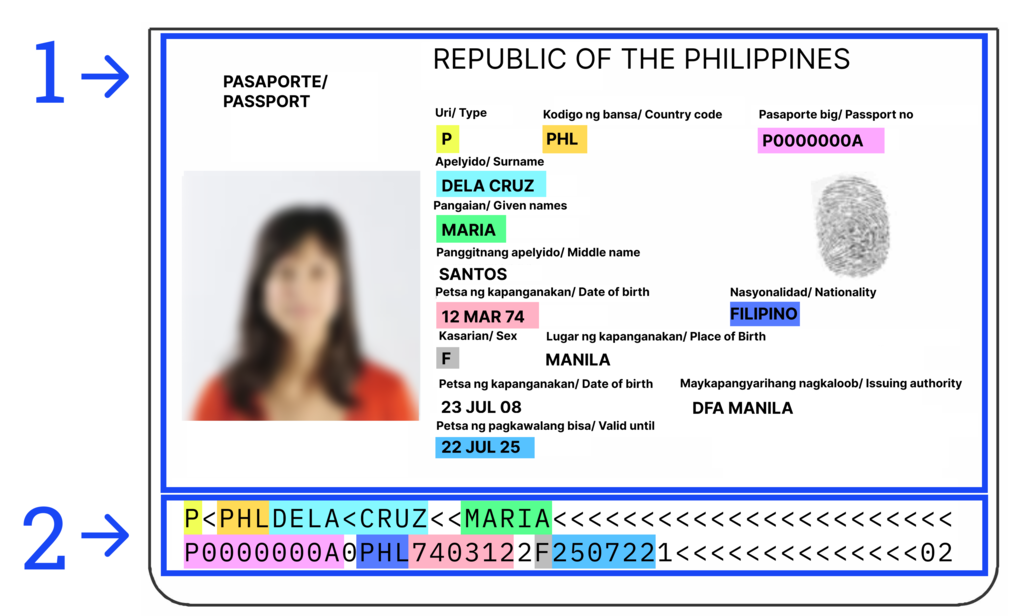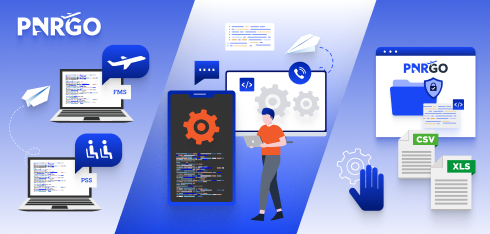Air operators are bound by numerous regulations around the world that oblige them to submit passenger data to the relevant authorities before the flight. The submitted data has to match precisely the personal data from the passport that is being used by the passenger for a particular trip. Sometimes this can get a bit tricky!
In order to stay compliant, many air operators like to use PnrGo’s automated data transfer service in integration with their FMS. PnrGo works with various Flight Management Systems and extracts the passenger data in order to automate the submissions. Here are some best practices we recommend for air operators to prevent common problems with PAX data submissions.
First rule: Passport data over passenger profile data in FMS
It is important to know that in your FMS, there are usually two places to enter passenger details. One is at the ‘profile’ level, and the other - at the ‘passport’ or 'travel document' level. The ‘profiles’ allow you to build your customer database within the FMS to facilitate your customer service. However, it is the ‘passport’ data that matters in terms of the mandatory PAX data submissions. Here is why:
Transliteration - same person, different name spellings
Your customer may have more than one passport, and their name may be written differently depending on the country of issue. This is a common case for passengers whose names require transliteration (e.g. cyrillic, arabic, or asian alphabets). The rules are not unified across the world – so for example, the name “Иванова” could be written as “Ivanova” or “Iwanowa”. The PAX name should always be submitted following the spelling in the document used for travel.
Single names
In some countries, people can have only one name. This name is often entered as a surname in the passport, even if it is actually used by the passenger as a given name… In your passenger profile, you may have this name saved in a different field which might cause problems with the data submission. Follow the passport to enter the name into the correct field at the ‘passport’ level in your system.
Middle names
In some countries, these are treated as part of the given names, in others as separate middle names, and yet in others as extra surnames. Some countries are very strict on reporting the full name, including the middle one. You should always ensure you have this name included at the ‘passport’ level in your FMS, exactly as it is featured in your passenger’s passport.
Second rule: In case of inconsistency use machine readable data
The passport document consists of two parts:
- a visual part – that is easier to read for humans who perform the physical check, e.g. at border crossing;
- a machine readable zone (MRZ) – the two lines of text at the bottom of the passport that can be scanned quickly and automatically.

Why does this matter so much? Here comes another ‘trap’ – there might be differences between the data written in the visual part and the data in the machine readable zone. Here are the most common cases of when this might happen:
Long names
If the names are too long, in the MRZ they are abbreviated to their most significant parts, and should therefore also be submitted in that shortened format so that the receiving systems can process everything correctly.
Special characters – punctuation and diacritics
In the MRZ, some punctuation marks in names, e.g. hyphens (-), apostrophes (‘) or slashes (/), may be skipped entirely or replaced by a single-chevron (<).
Names that contain diacritical marks may be shown ‘as is’ in the visual part of the passport. In the MRZ, however, such marks must be transcribed. Some accents are easy to convert (e.g. á or à become just ‘a’), while others may be subject to different rules depending on the country of issue (e.g. ü can be transcribed as ue, uxx or u).
Passenger names in the machine readable zone
Below you can find several examples of names written in MRZ. Double-chevron << separates different name fields as they are transferred from the visual part of the passport:
- Multiple given names or multiple surnames:
- MRZ: HENG<<DEBORAH<MING<LO<<<<<<<<<<<<<<<<<<
VIZ: HENG, DEBORAH MING LO
Name: Deborah Heng Ming Lo - MRZ: VILARCHAO<FERNANDEZ<<JOSE<RAMON<<<<<<<<
VIZ: VILARCHAO FERNANDEZ, JOSE RAMON
Name: Jose Ramon Vilarchao Fernandez
- MRZ: HENG<<DEBORAH<MING<LO<<<<<<<<<<<<<<<<<<
- Given name, middle name (skipped), and surname:
- MRZ: DELA<CRUZ<<MARIA<<<<<<<<<<<<<<<<<<<<<<<
VIZ: DELA CRUZ, MARIA, SANTOS
Name: Maria Santos Dela Cruz
- MRZ: DELA<CRUZ<<MARIA<<<<<<<<<<<<<<<<<<<<<<<
- No given name:
- MRZ: SATRIYA<SUDARPA<<<<<<<<<<<<<<<<<<<<<<<<
VIZ: SATRIYA SUDARPA
Name: Satriya Sudarpa
- MRZ: SATRIYA<SUDARPA<<<<<<<<<<<<<<<<<<<<<<<<
Other travel documents - IDs and visas
Similar rules apply to machine readable ID cards and visas which might also be used by passengers in their travels.
Are you interested in automated PAX and CREW data transfers? Schedule a call with one of our Sales Representatives to discuss your needs.



















